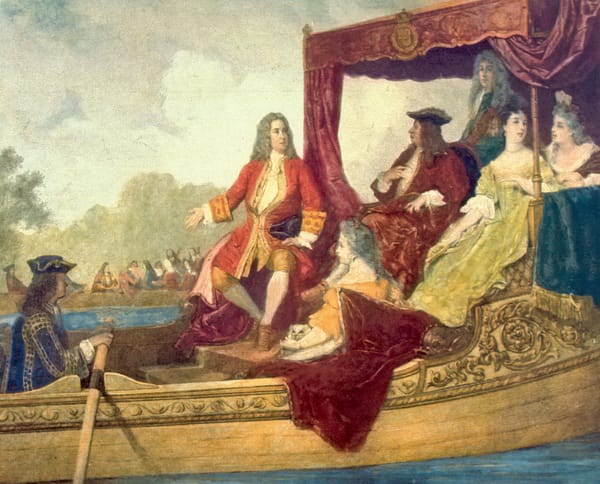The Evolution of Opera: From Baroque to Modern Times

Opera is a form of musical theatre that has been an integral part of Western classical music for over four centuries. Its origins can be traced back to the late 16th century in Italy, where it quickly gained popularity and spread to other European countries. Since then, opera has evolved and undergone many changes, adapting to the cultural and musical trends of the times. In this article, we will explore the evolution of opera from its Baroque origins to modern times.
Opera is a unique art form that combines music, drama, and spectacle. It tells stories through singing, using arias, recitatives, ensembles, and choruses. The vocal performances are often accompanied by an orchestra, and the music is carefully crafted to convey the emotions and mood of the characters and the story. Opera also includes stage design, costumes, lighting, and other elements that contribute to the overall theatrical experience.
Opera has played a significant role in the development of Western classical music. It has been a platform for many of the greatest composers to showcase their musical talents, from Handel and Mozart to Verdi and Wagner. Opera has also been a source of inspiration for other musical genres, such as film scores, musical theatre, and pop music.
Despite its popularity, opera has also faced criticism and challenges throughout its history. Its elitist image and high production costs have made it inaccessible to many people, and its traditional repertoire and themes have been accused of being outdated and irrelevant. Nevertheless, opera continues to be a vibrant and evolving art form that has the power to move and inspire audiences around the world.
Baroque Opera (1600-1750)
The Baroque period was a time of artistic extravagance and dramatic expression, and these characteristics are reflected in the music and style of Baroque opera. The earliest operas were created in Italy, where composers such as Claudio Monteverdi and Alessandro Scarlatti pioneered the genre. The first opera, “Dafne,” was written by Jacopo Peri in 1597, but it is Monteverdi’s “Orfeo” (1607) that is often considered the first true opera.
Baroque opera was characterized by its use of recitative, a style of singing that imitates speech and is used to advance the plot. The arias, on the other hand, were more melodious and expressive, and allowed for the singers to display their vocal virtuosity. The orchestra played an important role in Baroque opera, providing accompaniment for the singers and adding to the dramatic effect.
The most famous composer of Baroque opera is undoubtedly George Frideric Handel, who wrote over 40 operas during his career. Handel’s operas, such as “Julius Caesar” and “Rinaldo,” were known for their elaborate arias and complex orchestration. Handel also introduced the da capo aria, a musical form in which the singer repeats the first section of the aria with embellishments, showcasing their vocal prowess.
Other notable Baroque operas include Jean-Baptiste Lully’s “Armide,” Johann Sebastian Bach’s “Coffee Cantata,” and Antonio Vivaldi’s “Orlando Furioso.” These operas were often performed in courtly settings for the nobility, and their lavish sets, costumes, and music were a symbol of wealth and power.
Despite their grandeur, Baroque operas were often criticized for their lack of realism and their reliance on formulaic plots and characters. Nevertheless, Baroque opera laid the foundation for the development of the genre, and its influence can still be heard in modern opera today.
Classical Opera (1750-1825)
The Classical period marked a transition from the elaborate and ornate style of Baroque opera to a more balanced and refined style. Composers such as Wolfgang Amadeus Mozart and Christoph Willibald Gluck sought to create operas that were more naturalistic and focused on human emotions and relationships.
Classical opera was characterized by its use of simpler melodies and harmonies, as well as its more equal treatment of the orchestra and the vocalists. The arias were less ornamental and more expressive, and the recitative was more musical and melodic. Classical operas also featured ensemble numbers, such as duets and trios, that showcased the interaction between characters.
Mozart was the most famous composer of Classical opera, and his works such as “The Marriage of Figaro” and “Don Giovanni” are still performed today. Mozart’s operas were known for their wit, charm, and emotional depth, and they were a reflection of the changing attitudes of the time towards love, marriage, and social hierarchy.
Gluck was another important composer of Classical opera, and his works such as “Orfeo ed Euridice” and “Iphigénie en Aulide” sought to create a more naturalistic and dramatic style of opera. Gluck’s operas were also notable for their use of the chorus, which played a more prominent role in the music and the drama.
Other notable Classical operas include Joseph Haydn’s “Orlando Paladino,” Luigi Boccherini’s “Caterina,” and Antonio Salieri’s “Les Danaïdes.” These operas were often performed in public theaters, rather than in courtly settings, and they reflected the growing interest in opera as a form of popular entertainment.
Classical opera was a significant step forward in the evolution of opera, and it laid the groundwork for the Romantic and modern styles that followed. Its emphasis on naturalism, melody, and ensemble singing influenced many composers and continues to be heard in opera today.
Romantic Opera (1825-1900)
The Romantic period was a time of emotional intensity and individual expression, and this was reflected in the music and style of Romantic opera. Composers such as Giuseppe Verdi, Richard Wagner, and Giacomo Puccini sought to create operas that were more grandiose, emotional, and nationalistic.
Romantic opera was characterized by its use of lush orchestration, sweeping melodies, and heightened drama. The arias were often longer and more complex, with a greater emphasis on emotional expression. The recitative was also more melodic and expressive, with a greater focus on the individual voices of the singers.
Verdi was the most famous composer of Romantic opera, and his works such as “Rigoletto,” “La Traviata,” and “Aida” are still performed today. Verdi’s operas were known for their powerful emotions, sweeping melodies, and intense drama, and they reflected the growing nationalist sentiment of the time.
Wagner was another important composer of Romantic opera, and his works such as “Tristan und Isolde” and “The Ring Cycle” were known for their epic scale, complex orchestration, and innovative use of leitmotifs. Wagner’s operas were also notable for their use of mythology and symbolism, and they reflected his belief in the power of music to express deep and universal truths.
Puccini was a later composer of Romantic opera, and his works such as “La Bohème,” “Tosca,” and “Madama Butterfly” were known for their emotional intensity, exotic settings, and melodic richness. Puccini’s operas were also notable for their use of local color and vernacular language, and they reflected his interest in the everyday lives of ordinary people.
Other notable Romantic operas include Hector Berlioz’s “Les Troyens,” Charles Gounod’s “Faust,” and Mikhail Glinka’s “A Life for the Tsar.” These operas were often performed in large public theaters, and their spectacle and emotional power made them popular with audiences of the time.
Romantic opera marked a significant departure from the Classical style, and it reflected the changing attitudes of the time towards individualism, emotion, and nationalism. Its influence can still be heard in modern opera today, and it remains a beloved and important part of the operatic repertoire.
Modern Opera (1900-present)
The 20th century brought a new era of experimentation and innovation to opera, with composers such as Arnold Schoenberg, Igor Stravinsky, and Benjamin Britten pushing the boundaries of traditional opera and exploring new forms and techniques.
Modern opera is characterized by its diversity of styles and forms, ranging from the atonal expressionism of Schoenberg’s “Erwartung” to the minimalism of Philip Glass’s “Einstein on the Beach.” Composers have experimented with electronic music, jazz, rock, and other popular styles, and have incorporated new technologies such as video projection and computer-generated sound.
Some modern operas have continued the tradition of grandiose spectacle and emotional intensity, such as Richard Strauss’s “Salome” and Sergei Prokofiev’s “War and Peace.” Others have sought to deconstruct and subvert traditional operatic forms, such as John Cage’s “Europera” and Robert Ashley’s “Perfect Lives.”
Many modern operas have also explored contemporary issues and themes, such as social justice, politics, and identity. Examples include John Adams’s “Nixon in China,” Kaija Saariaho’s “L’Amour de Loin,” and Jake Heggie’s “Dead Man Walking.”
Modern opera has also seen a renewed interest in works by women and composers of color, whose voices were often marginalized in the past. Composers such as Judith Weir, Jennifer Higdon, and Tan Dun have created innovative and compelling operas that challenge traditional norms and offer new perspectives on the art form.
Despite its diversity and experimentation, modern opera remains deeply rooted in the traditions and history of the art form. It continues to evolve and adapt to new cultural and technological changes, while remaining a vital and important form of musical expression.
The Future of Opera
As we move further into the 21st century, the future of opera is both exciting and uncertain. While the COVID-19 pandemic has presented unprecedented challenges to the performing arts, it has also spurred new innovations and opportunities for opera.
One of the most promising developments is the increasing use of digital technology to enhance and expand the opera experience. Many companies have embraced live streaming and online platforms to reach new audiences and connect with fans around the world. Opera houses are also experimenting with virtual and augmented reality, 360-degree video, and other immersive technologies to create new and engaging productions.
Another trend is the growing interest in new and diverse voices in opera. Companies are commissioning more works by women, people of color, and LGBTQ+ artists, and are actively seeking to create more inclusive and diverse environments on and offstage. This is reflected in the growing number of contemporary operas that address contemporary issues and themes, as well as in the increasing popularity of non-Western operatic forms such as Chinese and Japanese opera.
Despite these exciting developments, opera faces significant challenges in the years ahead. One of the biggest is the aging audience demographic, which threatens the long-term sustainability of the art form. Companies are working to attract younger audiences through innovative marketing and programming, but there is still much work to be done to make opera more accessible and relevant to today’s audiences.
Another challenge is the ongoing need to address issues of diversity, equity, and inclusion in the industry. Many companies are working to address these issues by increasing representation and opportunities for underrepresented groups, but progress has been slow in some areas.
Overall, the future of opera is both promising and uncertain. While the challenges are significant, there is also a growing sense of excitement and possibility as the art form continues to evolve and adapt to new cultural and technological changes.





